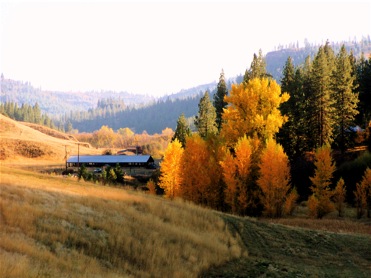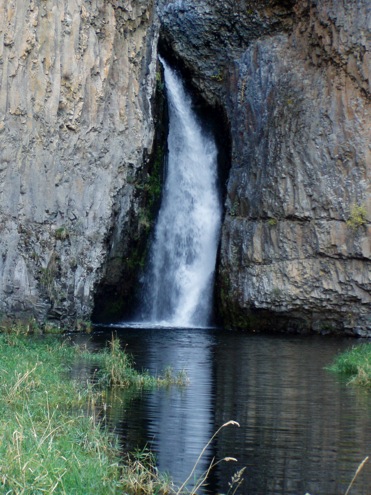
James Hagengruber
Staff writer, Spokesman-Review
October 2, 2006
A dam nearly as big as Grand Coulee could be built in coming years to store water on Hawk Creek – a tributary of Lake Roosevelt – as part of a plan to bring more water to increasingly parched portions of Washington.
The Hawk Creek storage dam in Lincoln County is one of four being considered by state and federal officials. Other sites include Foster Creek in Douglas County and Sand Hollow and Crab Creek, both in Grant County.
The storage dams would be filled with water pumped from the Columbia River and would not block fish passage, said Derek Sandison, Central Washington regional director for the Department of Ecology.
Experts will now take a closer look at each of the sites to study earthquake potential, environmental risks and if the underlying bedrock would be suitable for storing a massive lake. The suitability appraisal is expected to be completed in March.
"If the answer is none of them (is suitable), we won't go any further," Sandison said.
If one or two of the sites are promising, the state would first need congressional approval before going further. There would also be years of studies and public hearings. At the earliest, construction would not begin for at least 15 years, Sandison said.
There's also the issue of cost. The scale of these structures would be massive – the dam at Foster Creek, for example, would be 11,000 feet long and 700 feet high, according to a 2005 Department of Ecology report. This size is roughly twice as big as the Grand Coulee Dam, which is the largest concrete structure in North America.
But Sandison and other state officials say Washington's water needs are as massive as these dams. Wells are going dry in portions of central and Eastern Washington. The Odessa Aquifer, for instance, could use about 360,000 acre feet of water to replenish depleted groundwater supplies, Sandison said.
Communities and businesses along the Columbia River are also desperately seeking new sources of water, particularly in light of a recent state moratorium on the issuance of new water rights. Recent drought years are only adding to the need, Sandison said.
A 2004 study by the University of Washington predicted that an additional 1 million acre feet of water could solve many of these problems and result in a 20 percent expansion in the state's agricultural economy and upward of 45,000 new jobs. The Hawk Creek storage dam alone could hold about 1.5 million acre feet – one acre foot covers an acre of land with a foot of water.
But the Columbia River system is already considered one of the hardest working rivers in the world, with 61 dams blocking the river or its tributaries. Any proposal to take more water from the river would have direct impacts on downstream users, including the state of Oregon and federally protected salmon runs. Sandison said the state of Washington is already beginning preliminary discussions with Oregon, British Columbia, Idaho and Montana.
"We're trying to do a water management program without making additional hits on the river during critical periods," he said.
Although the goals of the dams are noble, they raise numerous environmental and cultural concerns, said Andy Dunau, the executive director of the Roosevelt Forum, a group that works to solve management issues on the reservoir.
"I see it as the beginning of a very long process," Dunau said. "The public needs to understand the magnitude and scope of these projects."The storage dams would not block fish passage, but the reservoirs would flood thousands of acres of farms and wildlife habitat. The Hawk Creek Dam would also flood areas considered sacred by the Spokane Tribe of Indians. If the site is selected, the dam would be located about a mile upstream from a natural waterfall and scenic gorge.
The price for any dams would be paid by those who use the water, Sandison said. By state law, one-third of the water must be saved for fish. This means taxpayers will ultimately foot a good portion of the bill.
Sandison said huge questions will need to be addressed if any of the sites are found suitable for a storage dam. These will take years to sort out.
"These big reservoirs take so long, you've got to get an early start," he said.
_________
Copyright The Spokesman-Review, 2006
Copyright The Spokesman-Review, 2006

Will dams drown even more streams and rivers in eastern Washington? Hawk Creek Canyon, near the confluence of the Spokane River and Columbia River (Lake Roosevelt). Washington State is trying to take more water from the Columbia River, and has funded an army of dam planners.
New dams would rival Grand Coulee
Hawk Creek among proposed reservoir sites


Hawk Creek Falls.